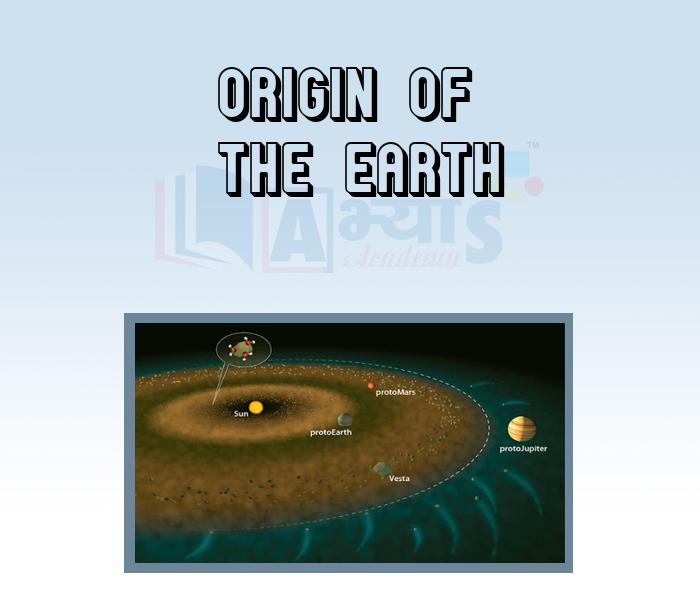Origin of the Earth


Origin of the Earth
Origin Of The Earth: The origin of our earth took place around 4.6 billion years ago. Though the exact factors behind the process of its evolution are yet to be revealed, yet one of the most favoured theories suggests that it is the outcome of a star formation. Moreover, its evolution was not sudden, rather it was evolutionary Le. the earth had passed through several phases to attain its present form.
This entire evolutionary process of the earth can be studied with the help a Geological Timescale in which the entire history of the earth formation is divided into eras, periods, epochs and ages.Some of the most important landmarks in the evolution of earth are given below.
Pre-Cambrian Period: (From the birth of the earth to 500 million years ago) This period witnessed the cooling process of the earth from a hot gaseous to a molten state. With the further cooing of the outer thin solid crust the first ever rocks were formed on the earth's surface. But as the inner molten, liquid part was experiencing violent volcanic activity, so the rocks formed under such unsuitable conditions were completely unfossiliferous i.e, without life.
Palaeozoic Era: (From 570 million years ago to 225 million years ago): For the first time life appeared on the earth. The initial non-floral vegetation and invertebrates gradually were gradually followed by the vertebrates. This era is further divided into six periods:
Cambrian (570 million to 500 million years ago)
Ordovician (500 million to 440 million years ago)
Silurian (440 million on 395 million years ago)
Devonian (395 million years to 345 million years ago)
Carboniferous (345 million years to 28o million years ago) Most of the present day coal was formed in this period.
Permian (280 million years to 225-250 million years ago)
Mesozoic Era: (250 million years ago to about 65 million years ago) It is called the Age of Dinosaurs' because most dinosaurs developed, and went extinct, during that time.
Cenozoic Era meaning "new life" (from Greek kainos "new", and zoe "life") is the most recent of the three classic geological eras and covers the period from 65.5 million years to the present. It is marked by the Cretaceous-Tertiary extinction event at the end of the Cretaceous that saw the demise of the last non-avian dinosaurs and the end of the Mesozoic Era. The Cenozoic era is ongoing.
Students / Parents Reviews [10]
My experience with Abhyas is very good. I have learnt many things here like vedic maths and reasoning also. Teachers here first take our doubts and then there are assignments to verify our weak points.

Shivam Rana
7thAbhyas Methodology is very good. It is based on according to student and each child manages accordingly to its properly. Methodology has improved the abilities of students to shine them in future.

Manish Kumar
10thAbhyas is a complete education Institute. Here extreme care is taken by teacher with the help of regular exam. Extra classes also conducted by the institute, if the student is weak.

Om Umang
10thMy experience with Abhyas academy is very good. I did not think that my every subject coming here will be so strong. The main thing is that the online tests had made me learn here more things.

Hiya Gupta
8thMy experience was very good with Abhyas academy. I am studying here from 6th class and I am satisfied by its results in my life. I improved a lot here ahead of school syllabus.

Ayan Ghosh
8thIt was good as the experience because as we had come here we had been improved in a such envirnment created here.Extra is taught which is beneficial for future.

Eshan Arora
8thBeing a parent, I saw my daughter improvement in her studies by seeing a good result in all day to day compititive exam TMO, NSO, IEO etc and as well as studies. I have got a fruitful result from my daughter.

Prisha Gupta
8thIt was a good experience with Abhyas Academy. I even faced problems in starting but slowly and steadily overcomed. Especially reasoning classes helped me a lot.

Cheshta
10thIt has a great methodology. Students here can get analysis to their test quickly.We can learn easily through PPTs and the testing methods are good. We know that where we have to practice

Barkha Arora
10thOne of the best institutes to develope a child interest in studies.Provides SST and English knowledge also unlike other institutes. Teachers are co operative and friendly online tests andPPT develope practical knowledge also.
